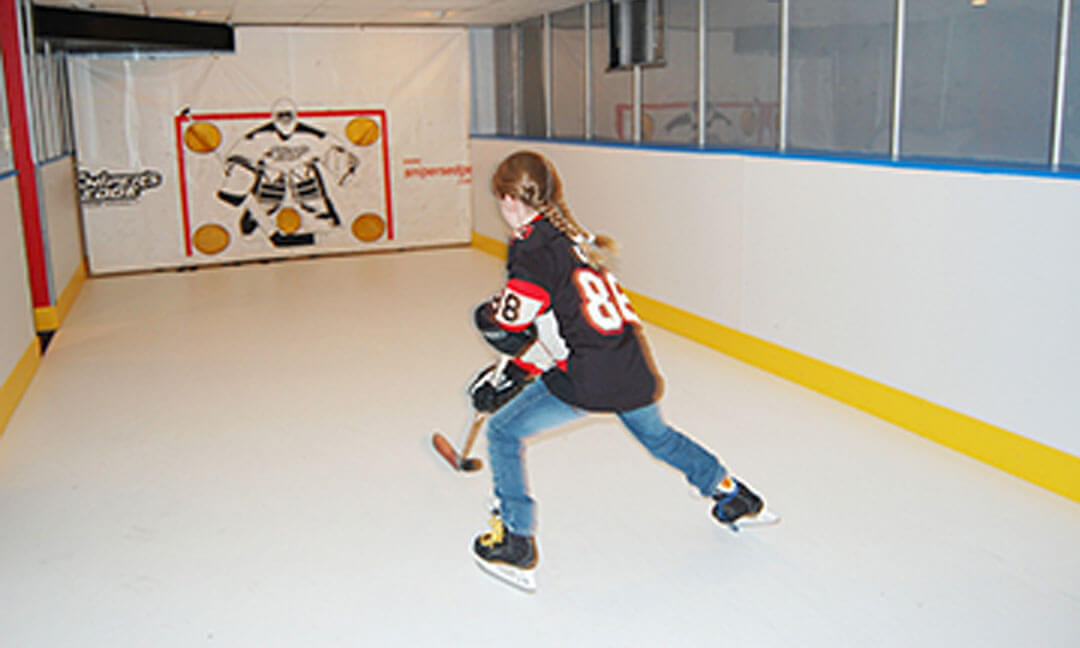Mastering a skill is a process that requires clear goals, research and information gathering, consistent practice, and feedback from peers. By following these ten steps, anyone can become an expert in their craft. Though hockey was designed to be played on natural ice, synthetic rinks can benefit novice and experienced skaters. The slight resistance synthetic ice offers can help improve balance and strength.
Identify Your Weaknesses
Whether you are a hockey player looking to hone your skills at home or a figure skater ready to take your skills to the next level, practicing on a high-quality synthetic ice surface can help you reach your goals. The best synthetic ice is designed to mimic natural ice as closely as possible, so you can use traditional hockey or figure skates without worrying about them being too slippery. However, since the surface of synthetic ice has a slightly rougher texture than natural ice, it can cause some added friction to your blades during your workout. This extra friction is good for figure skaters, as it forces you to work out your skating muscles even harder to keep up with the surface and maintain your balance.
In addition, the ability to easily install a synthetic ice rink in your home allows you to practice whenever you want. Just a few pieces of synthetic ice can transform any open space into a rink where you can practice shooting, ice skating, and stickhandling. The panels fit together like a giant jigsaw puzzle and can be installed over a hard surface such as concrete, carpet, or grass as long as it is sturdy enough to support the weight of people ice skating.
Break Down the Skill
People who discover they want to master a skill early in life often have an advantage, as it is easier to dedicate time to the required practice. However, even those with the best talent will only reach expert-level performance with deliberate practice. You must break down the skill into components to reach your goal and create a training plan for working on each. It will help you achieve your goals in a more manageable manner while also keeping you motivated and improving at a faster rate. The good news is that modern technology has made it possible to replicate the experience of skating on natural ice at home. Synthetic ice comprises carefully interlocked panels coated with a polymer material that simulates natural ice. It allows hockey players and other winter sports athletes to skate any time, even when a traditional rink isn’t available.
Some synthetic ice products require a layer of lubrication to reduce the friction on the skate blades. Still, Glice’s innovative design allows your blades to scratch into the surface lightly, releasing additional gliding lubrication as you skate. It results in a superior glide close to the feeling of gliding on impeccably smooth frozen water.
Practice Consistently
Consistency is critical whether you’re learning a new skill or perfecting one you already have. It’s challenging to master a skill without consistent and focused practice, even with natural talent or innate ability. It’s essential to find a schedule that fits your busy life and stick to it. It’s also necessary to give your full attention when practicing, ideally eliminating distractions and working in a quiet place. Breaking down a skill into manageable parts is another helpful way to make the process more manageable. It allows you to focus on the smaller parts of a skill instead of being overwhelmed by the entire task. It helps you build a stronger foundation and makes advancing to more complex skills easier.
As you improve your skills, asking for feedback is also a good idea. You can seek out advice from coaches, mentors, or fellow skaters. You can also look for articles or videos online to help you identify your weaknesses and find solutions. Seeking feedback can help you make measurable progress toward your objective and provide valuable information on how to achieve your goal best. As you advance, don’t be scared to push yourself past your comfort zone. It can help you evolve and learn faster than a comfortable routine. You can continue challenging yourself by setting higher goals and working to surpass them each time. It is the path that many champion figure skaters have taken, and it can help you become a more rounded athlete and performer.
Ask for Feedback
Although skating on natural ice is ideal for hockey players, it is only sometimes possible. Natural ice depends on cold winter climates and requires constant maintenance and resurfacing to keep it smooth for skaters. It can also be expensive to rent ice time, especially in locations where rinks are for-profit businesses and not open year-round. Synthetic ice rinks are an excellent alternative to natural ice and allow players to improve their skills without spending money renting ice time. While it is smoother than natural ice, it is an excellent option for skaters who want to continue training even when ice isn’t available.
The most common complaint about synthetic ice is that it has more friction than natural ice and wears down a player’s skate blades faster. It is due to the rugged polymer surface that protects the rink and prevents it from breaking down but also increases the amount of friction on the skate blade. This higher resistance benefits new skaters as skating on the synthetic surface requires more effort, which can help build strength and endurance. It can also be helpful for competitive skaters who use the resistance of the artificial rink to develop their power and accuracy with their shots. Synthetic ice solutions are manufactured using advanced materials that ensure the panels fit together perfectly with no expansion or contraction to create a flawless skating surface.

